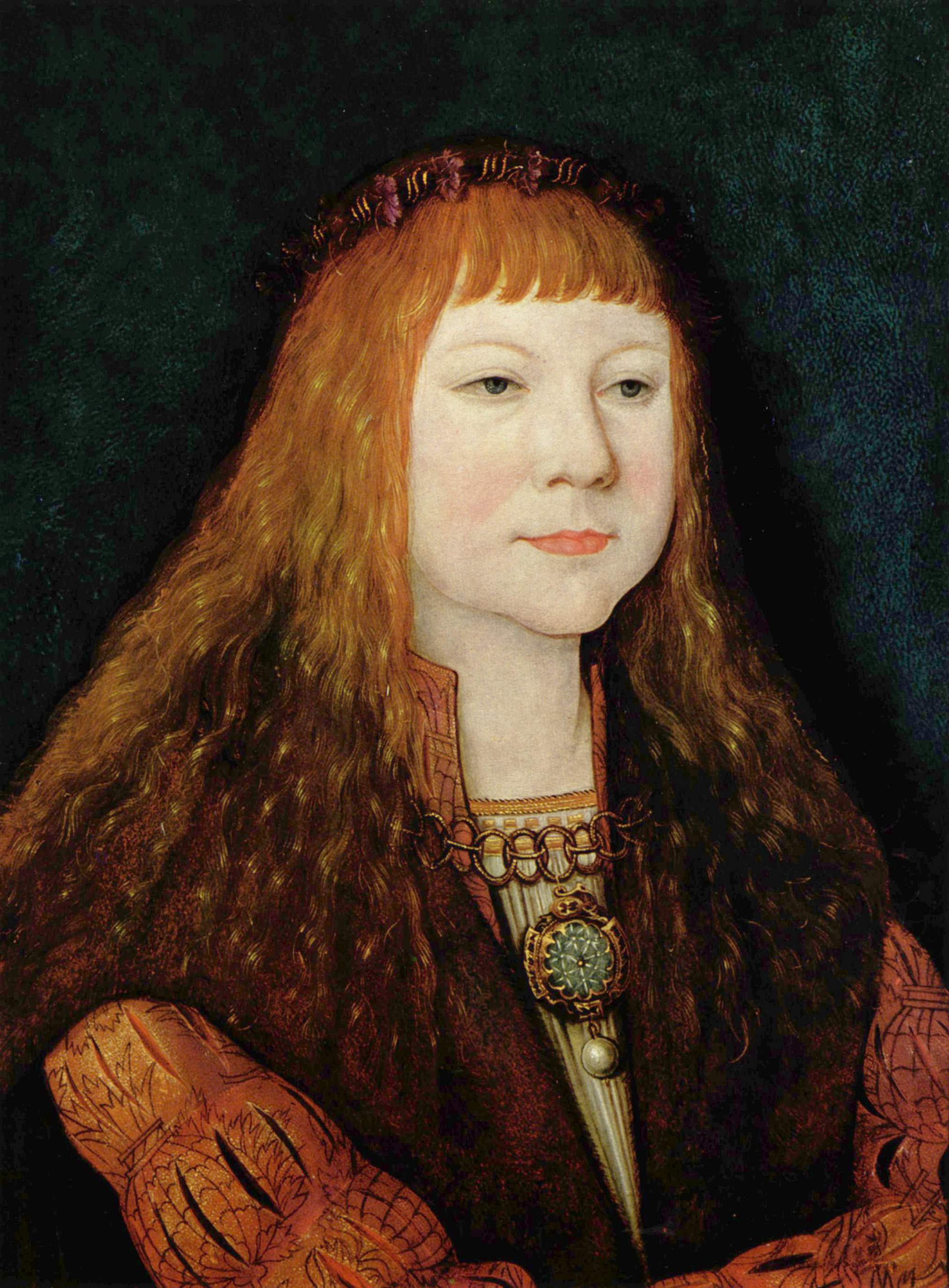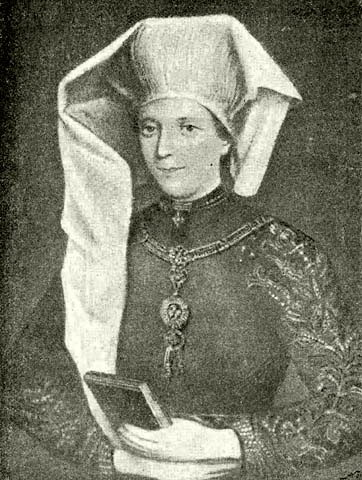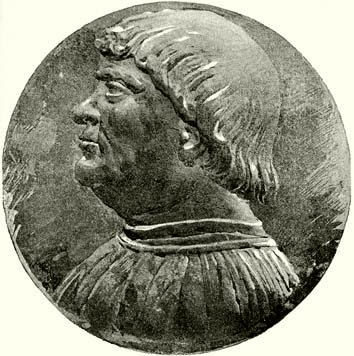|
Louis II Of Hungary And Bohemia
Louis II ( cs, Ludvík, hr, Ludovik , hu, Lajos, sk, Ľudovít; 1 July 1506 – 29 August 1526) was King of Hungary, Croatia and Bohemia from 1516 to 1526. He was killed during the Battle of Mohács fighting the Ottomans, whose victory led to the Ottoman annexation of large parts of Hungary. Early life At his premature birth in Buda on 1 July 1506, the court doctors kept him alive by slaying animals and wrapping him in their warm carcasses as a primitive incubator. He was the only son of Vladislaus II Jagiellon and his third wife, Anne of Foix-Candale. Coronation Vladislaus II took steps to ensure a smooth succession by arranging for the boy to be crowned in his own lifetime; the coronation of Louis as king of Hungary took place on 4 June 1508 in Székesfehérvár Basilica, and his coronation as king of Bohemia was held on 11 March 1509 in St. Vitus Cathedral in Prague. King of Hungary and Croatia In 1515 Louis II was married to Mary of Austria, granddaughter of Emp ... [...More Info...] [...Related Items...] OR: [Wikipedia] [Google] [Baidu] |
Hans Krell
Hans Krell (c. 1490–1565 or 1586), also Krehl ou Kreil, was a German painterBiographical sketch in Helen A Dickinson German Masters of Art p. 96 of the Renaissance, mainly known as a portrait painter. He is thought to have been born in Crailsheim or Ansbach, and died in Leipzig. Hans Krell started his career as court painter of George the Pious, Margrave of Brandenburg-Ansbach in Ansbach. He then entered into the service of King Louis II of Hungary in Prague and Buda, where he was employed as court portraitist in the years 1522–1526. He is later recorded in Leipzig (from 1531) and in Freiberg in Saxony (since 1534). Krell was known as the ''Fürstenmaler'' (Painter of Princes) in service of the German Princes ''–'' Albrecht of Brandenburg-Ansbach, Duke in Prussia, Hedwig Jagiellon, Electress of Brandenburg and the Elector Augustus of Saxony. His paintings of Saxon princes in the ceremonial hall and the council chamber of the Old Town Hall in Leipzig were continually bein ... [...More Info...] [...Related Items...] OR: [Wikipedia] [Google] [Baidu] |
Ottoman Empire
The Ottoman Empire, * ; is an archaic version. The definite article forms and were synonymous * and el, Оθωμανική Αυτοκρατορία, Othōmanikē Avtokratoria, label=none * info page on book at Martin Luther University) // CITED: p. 36 (PDF p. 38/338) also known as the Turkish Empire, was an empire that controlled much of Southeast Europe, Western Asia, and North Africa, Northern Africa between the 14th and early 20th centuries. It was founded at the end of the 13th century in northwestern Anatolia in the town of Söğüt (modern-day Bilecik Province) by the Turkoman (ethnonym), Turkoman tribal leader Osman I. After 1354, the Ottomans crossed into Europe and, with the Ottoman wars in Europe, conquest of the Balkans, the Ottoman Anatolian beyliks, beylik was transformed into a transcontinental empire. The Ottomans ended the Byzantine Empire with the Fall of Constantinople, conquest of Constantinople in 1453 by Mehmed the Conqueror. Under the reign of Sule ... [...More Info...] [...Related Items...] OR: [Wikipedia] [Google] [Baidu] |
George, Margrave Of Brandenburg-Ansbach
George of Brandenburg-Ansbach (German: ''Georg''; 4 March 1484 – 27 December 1543), known as George the Pious (''Georg der Fromme''), was a Margrave of Brandenburg-Ansbach from the House of Hohenzollern. Biography Early life He was born in Ansbach, the second of eight sons of Margrave Frederick the Elder and his wife Sophia of Poland, daughter of Casimir IV of Poland and Elisabeth of Habsburg. Through his mother, he was related to the royal court in Buda. He entered the service of his uncle, King Vladislaus II of Bohemia and Hungary, living at his court from 1506. The king received him as an adopted son, entrusted him in 1515 with the Duchy of Oppeln, and in 1516 made him member of the tutelary government instituted for Hungary, and tutor of his son Louis II of Hungary and Bohemia. In 1521 he made an arrangement with Petar Keglević and pulled back from Hungary and Croatia; this arrangement, accepted by Louis II in 1526, was not accepted by Holy Roman Emperor F ... [...More Info...] [...Related Items...] OR: [Wikipedia] [Google] [Baidu] |
Tamás Bakócz
Tamás Bakócz (1442, in Erdőd15 June 1521, in Esztergom) was a Hungarian archbishop, cardinal and statesman. He was the son of a wagoner and was adopted by his uncle, who trained him for the priesthood and whom he succeeded as rector of Tétel (1480). He studied in Breslau and Padua. Shortly afterwards he became one of the secretaries of King Matthias Corvinus, who made him bishop of Győr and a member of the royal council (1490). Under Vladislaus II of Bohemia and Hungary (1490–1516) he became successively bishop of Eger, the richest of the Hungarian sees, archbishop of Esztergom (1497), cardinal (1500), and titular Latin Patriarch of Constantinople (1510). From 1490 to his death in 1521 he was the leading statesman of Hungary and mainly responsible for foreign policy. It was solely through his efforts that Hungary did not accede to the league of Cambrai, was consistently friendly with Venice, and formed a family compact with the Habsburgs. He was also the only Magy ... [...More Info...] [...Related Items...] OR: [Wikipedia] [Google] [Baidu] |
Charles V, Holy Roman Emperor
Charles V, french: Charles Quint, it, Carlo V, nl, Karel V, ca, Carles V, la, Carolus V (24 February 1500 – 21 September 1558) was Holy Roman Emperor and Archduke of Austria from 1519 to 1556, King of Spain ( Castile and Aragon) from 1516 to 1556, and Lord of the Netherlands as titular Duke of Burgundy from 1506 to 1555. He was heir to and then head of the rising House of Habsburg during the first half of the 16th century, his dominions in Europe included the Holy Roman Empire, extending from Germany to northern Italy with direct rule over the Austrian hereditary lands and the Burgundian Low Countries, and Spain with its southern Italian possessions of Naples, Sicily, and Sardinia. He oversaw both the continuation of the long-lasting Spanish colonization of the Americas and the short-lived German colonization of the Americas. The personal union of the European and American territories of Charles V was the first collection of realms labelled " the empire ... [...More Info...] [...Related Items...] OR: [Wikipedia] [Google] [Baidu] |
Anne Of Bohemia And Hungary
Anna of Bohemia and Hungary (23 July 1503 – 27 January 1547), sometimes known as Anna Jagellonica, was Queen of Germany, Bohemia, and Hungary and Archduchess of Austria as the wife of King Ferdinand I (later Holy Roman Emperor). Early life She was the oldest child and only daughter of King Vladislaus II of Bohemia and Hungary (1456–1516) and his third wife Anne of Foix-Candale. King Louis II of Hungary and Bohemia was her younger brother. Her paternal grandparents were King Casimir IV of Poland (of the Jagiellon dynasty) and Elisabeth of Austria, one of the heiresses of the Kingdom of Bohemia, the Duchy of Luxembourg and the Duchy of Kujavia. Her maternal grandparents were Gaston de Foix, Count of Candale, and Catherine de Foix, an Infanta of the Kingdom of Navarre. Anne was born in Buda (now Budapest). The death of Vladislaus II on 13 March 1516 left both siblings in the care of the Holy Roman Emperor Maximilan I. It was arranged for Anna to marry his gra ... [...More Info...] [...Related Items...] OR: [Wikipedia] [Google] [Baidu] |
First Congress Of Vienna
The First Congress of Vienna was held in 1515, attended by the Holy Roman Emperor, Maximilian I, and the Jagiellonian brothers, Vladislaus II, King of Hungary and King of Bohemia, and Sigismund I, King of Poland and Grand Duke of Lithuania. Previously, Vladislaus and Maximilian had agreed on a Habsburg-Jagiellon mutual-succession treaty in 1506. ''Encyclopaedia Humana Hungarica'' It became a turning point in the history of . After the death of Vladislaus, and later his son and heir, the childless [...More Info...] [...Related Items...] OR: [Wikipedia] [Google] [Baidu] |
Maximilian I, Holy Roman Emperor
Maximilian I (22 March 1459 – 12 January 1519) was King of the Romans from 1486 and Holy Roman Emperor from 1508 until his death. He was never crowned by the pope, as the journey to Rome was blocked by the Venetians. He proclaimed himself Elected Emperor in 1508 ( Pope Julius II later recognized this) at Trent, thus breaking the long tradition of requiring a Papal coronation for the adoption of the Imperial title. Maximilian was the son of Frederick III, Holy Roman Emperor, and Eleanor of Portugal. Since his coronation as King of the Romans in 1486, he ran a double government, or ''Doppelregierung'' (with a separate court), with his father until Frederick's death in 1493. Maximilian expanded the influence of the House of Habsburg through war and his marriage in 1477 to Mary of Burgundy, the ruler of the Burgundian State, heir of Charles the Bold, though he also lost his family's original lands in today's Switzerland to the Swiss Confederacy. Through marriage of his son ... [...More Info...] [...Related Items...] OR: [Wikipedia] [Google] [Baidu] |
Prague
Prague ( ; cs, Praha ; german: Prag, ; la, Praga) is the capital and largest city in the Czech Republic, and the historical capital of Bohemia. On the Vltava river, Prague is home to about 1.3 million people. The city has a temperate oceanic climate, with relatively warm summers and chilly winters. Prague is a political, cultural, and economic hub of central Europe, with a rich history and Romanesque, Gothic, Renaissance and Baroque architectures. It was the capital of the Kingdom of Bohemia and residence of several Holy Roman Emperors, most notably Charles IV (r. 1346–1378). It was an important city to the Habsburg monarchy and Austro-Hungarian Empire. The city played major roles in the Bohemian and the Protestant Reformations, the Thirty Years' War and in 20th-century history as the capital of Czechoslovakia between the World Wars and the post-war Communist era. Prague is home to a number of well-known cultural attractions, many of which survived ... [...More Info...] [...Related Items...] OR: [Wikipedia] [Google] [Baidu] |
King Of Bohemia
The Duchy of Bohemia was established in 870 and raised to the Kingdom of Bohemia in 1198. Several Bohemian monarchs ruled as non-hereditary kings beforehand, first gaining the title in 1085. From 1004 to 1806, Bohemia was part of the Holy Roman Empire, and its ruler was an elector. During 1526–1804 the Kingdom of Bohemia, together with the other lands of the Bohemian Crown, was ruled under a personal union as part of the Habsburg monarchy. From 1804 to 1918, Bohemia was part of the Austrian Empire, which itself was part of the dual monarchy of Austria-Hungary from 1867 to 1918. Following the dissolution of the monarchy, the Bohemian lands, now also referred to as Czech lands, became part of Czechoslovakia, and they have formed today's Czech Republic since 1993. Legendary rulers of Bohemia * praotec Čech (Pater Boemus) * Lech * Krok * Libuše, duchess * Přemysl the Ploughman, her husband * Nezamysl * Mnata * Vojen * Vnislav * Křesomysl * Neklan * Hostivít Pr ... [...More Info...] [...Related Items...] OR: [Wikipedia] [Google] [Baidu] |
Székesfehérvár Basilica
The Basilica of the Assumption of the Blessed Virgin Mary ( hu, Nagyboldogasszony-bazilika) was a basilica in Székesfehérvár ( la, Alba Regia), Hungary. From the year 1000 until 1527, it was the site of the coronation of the Hungarian monarch. After the Ottomans occupied the city in 1543, coronations of the Hungarian monarch moved elsewhere; the building was extensively damaged in a fire in 1601. It was replaced by the Cathedral Basilica of Székesfehérvár in 1777. Background The Basilica of the Assumption of the Blessed Virgin Mary was built in the late 1010s by Saint Stephen I, the first King of Hungary. It was never episcopal, but it was used as the principal church of the rulers of Hungary. The basilica was the most significant place of the Kingdom of Hungary in the Middle Ages, as it contained the crown jewels, including the throne, the Holy Crown of Hungary, the treasury and the archives. 37 kings and 39 queens were crowned in this basilica and 15 were buried in ... [...More Info...] [...Related Items...] OR: [Wikipedia] [Google] [Baidu] |
King Of Hungary
The King of Hungary ( hu, magyar király) was the ruling head of state of the Kingdom of Hungary from 1000 (or 1001) to 1918. The style of title "Apostolic King of Hungary" (''Apostoli Magyar Király'') was endorsed by Pope Clement XIII in 1758 and used afterwards by all Monarchs of Hungary. The term "King of Hungary" is typically capitalized only as a title applied to a specific person; however, within this article, the terms "Kings of Hungary" or "Junior Kings" (etc.) are also shown in capital letters, as in the manner of philosophical writing which capitalizes concepts such as Truth, Kindness and Beauty. Establishment of the title Before 1000 AD, Hungary was not recognized as a kingdom and the ruler of Hungary was styled Grand Prince of the Hungarians. The first King of Hungary, Stephen I. was crowned on 25 December 1000 (or 1 January 1001) with the crown Pope Sylvester II had sent him and with the consent of Otto III, Holy Roman Emperor. Fo ... [...More Info...] [...Related Items...] OR: [Wikipedia] [Google] [Baidu] |







